Sappabune
-
In 2024 I was asked to build a boat for a private Japanese garden in Texas. The client wanted a design with as much interior spaces as possible for a sixteen foot length. I chose a design I had seen in Sawara, Chiba, a small canal boat I measured. I also interviewed a former builder of these boats.
-
Sawara today is a well-known tourist destination with beautifully maintained historic buildings and warehouses fronting on the various canals running through the town center. Boat tours are available and a few older wooden boats can be found. The type is known as a sappabune or “bamboo leaf boat.”
-
Sappabune are pram-like with transoms fore and aft, thereby providing a lot of interior space. The bow transom is two pieces and peaked slightly. I built the boat of Atlantic white cedar, probably more similar to Japanese cedar in terms of density than any other North American wood. I finished the boat with decks and rub rails of cypress to provide more abrasion resistance.
Derelict sappabune I measured which formed the basis for this garden boat.
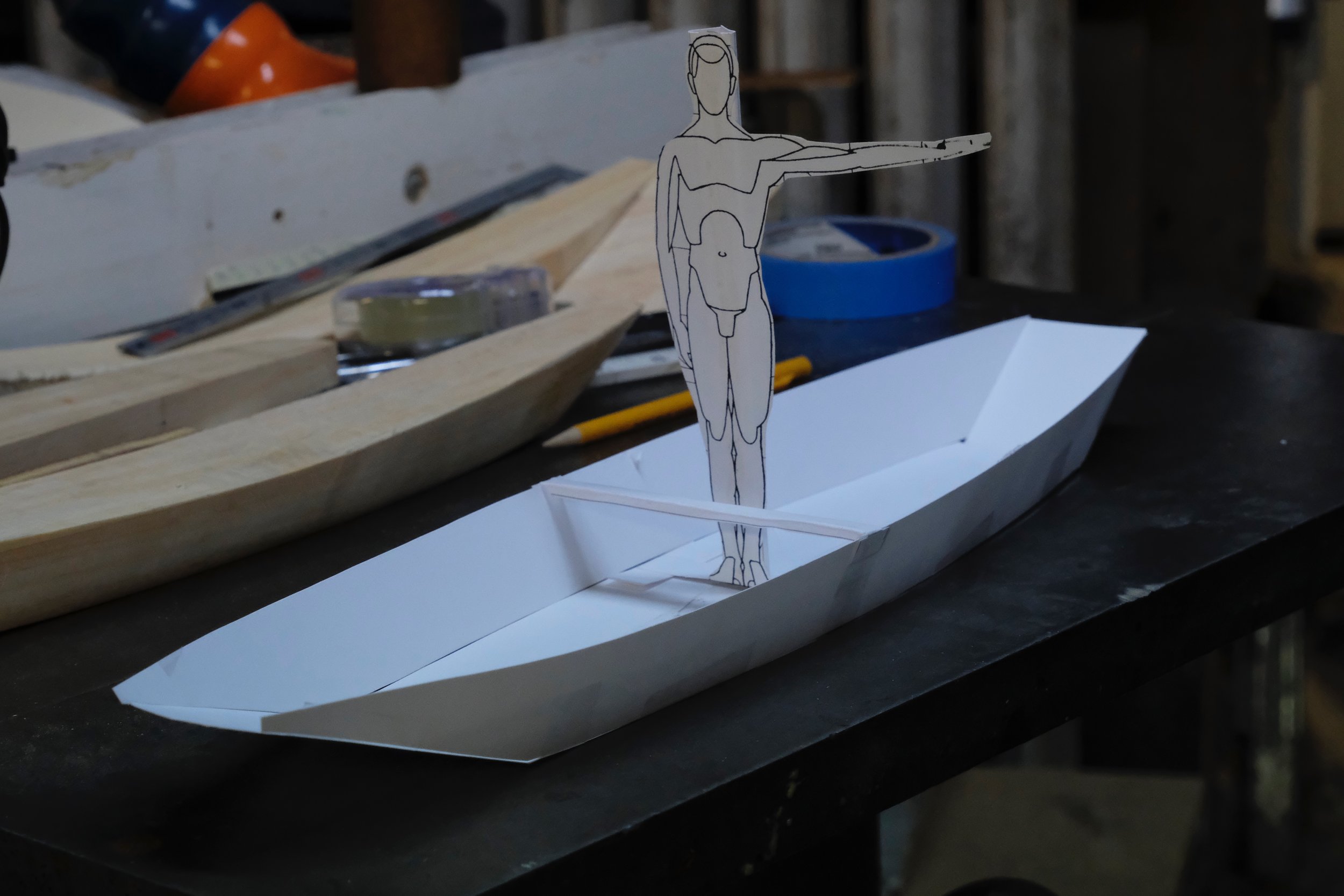
I like using scale models to work out design questions. Like Japanese boatbuilders I always work in 1/10th scale.
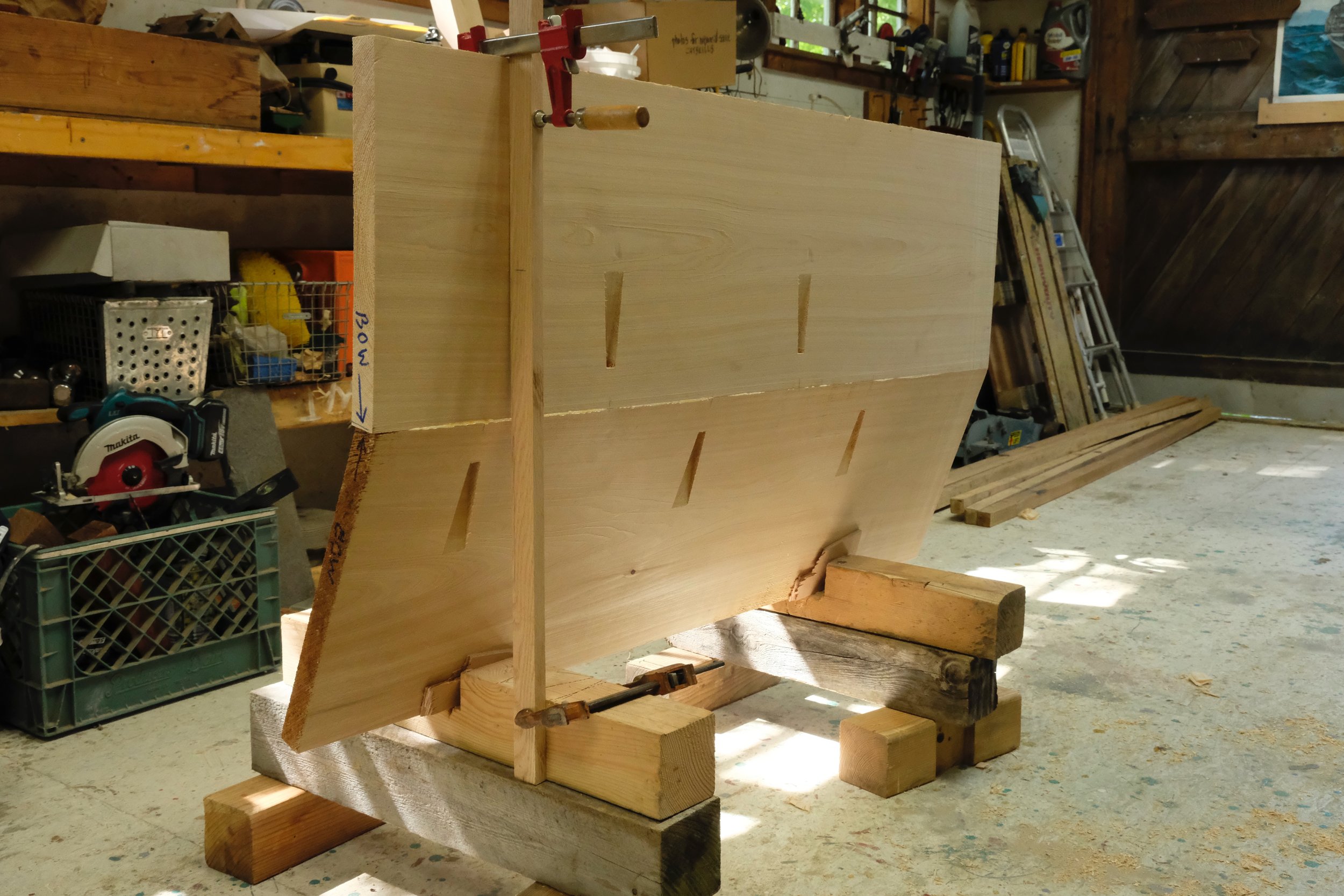
The peaked bow transom edge-nailed together.
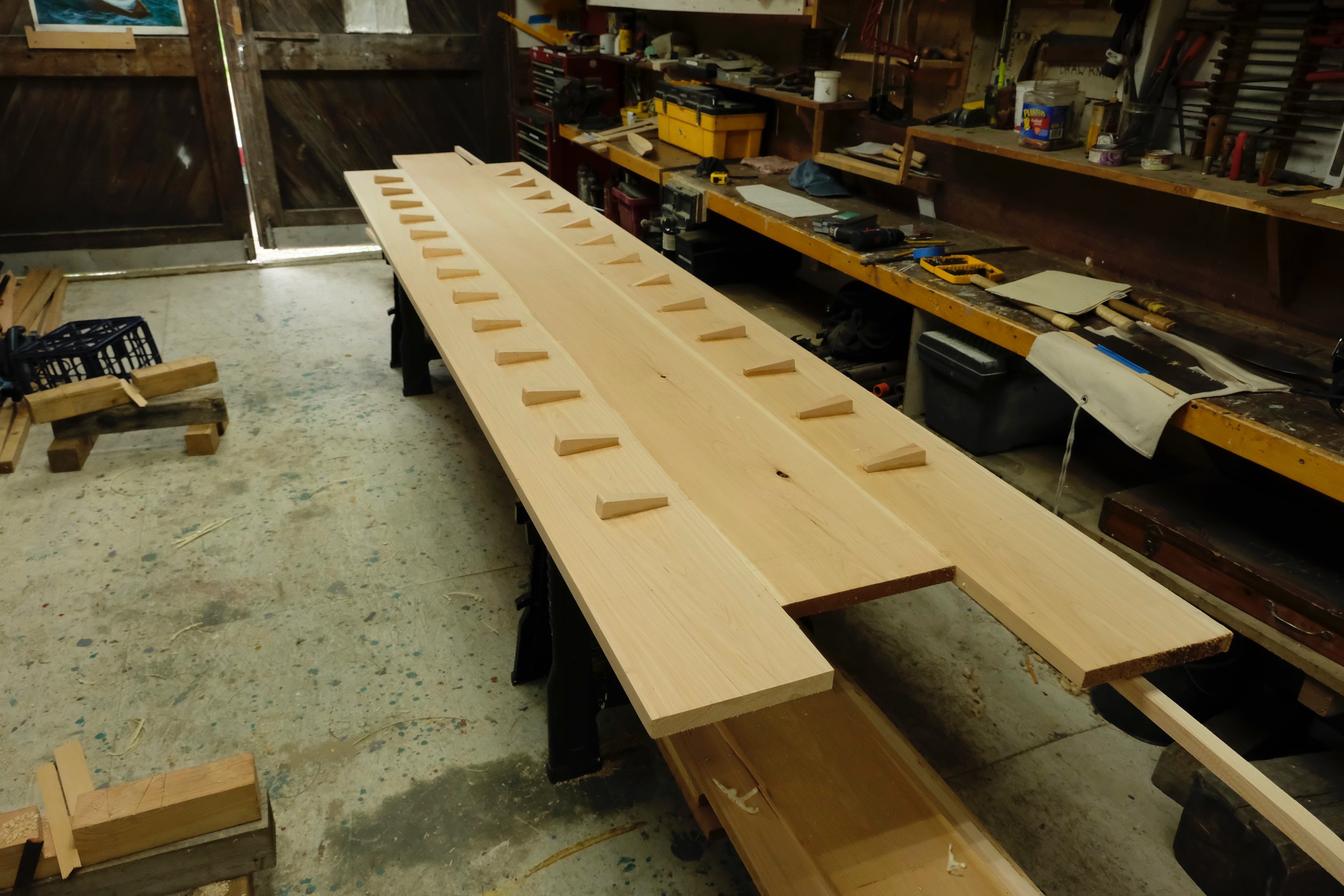
The bottom planks edge-nailed before the plugs were trimmed flush.
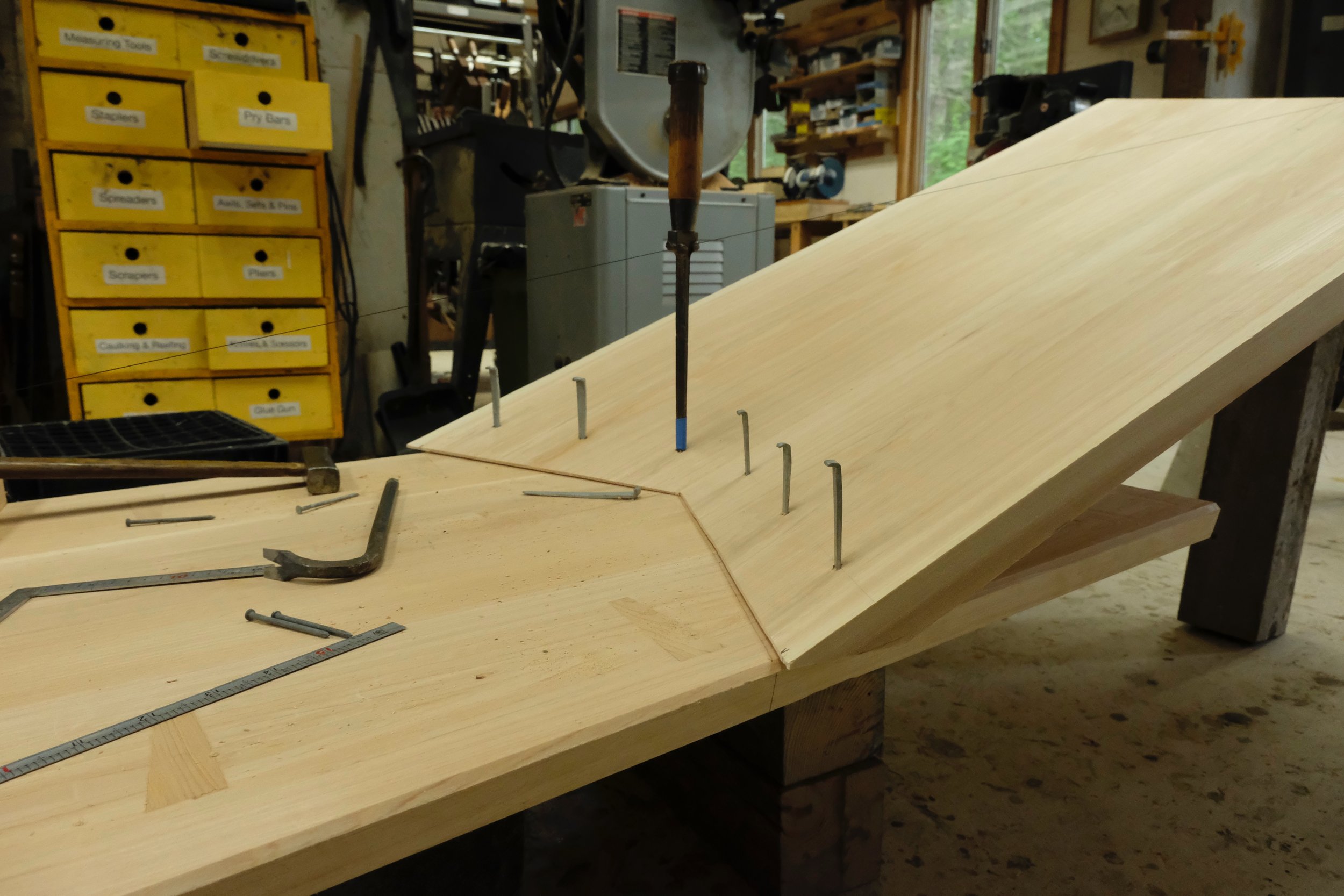
The bow transom is nailed vertically, the nails clenched underneath.
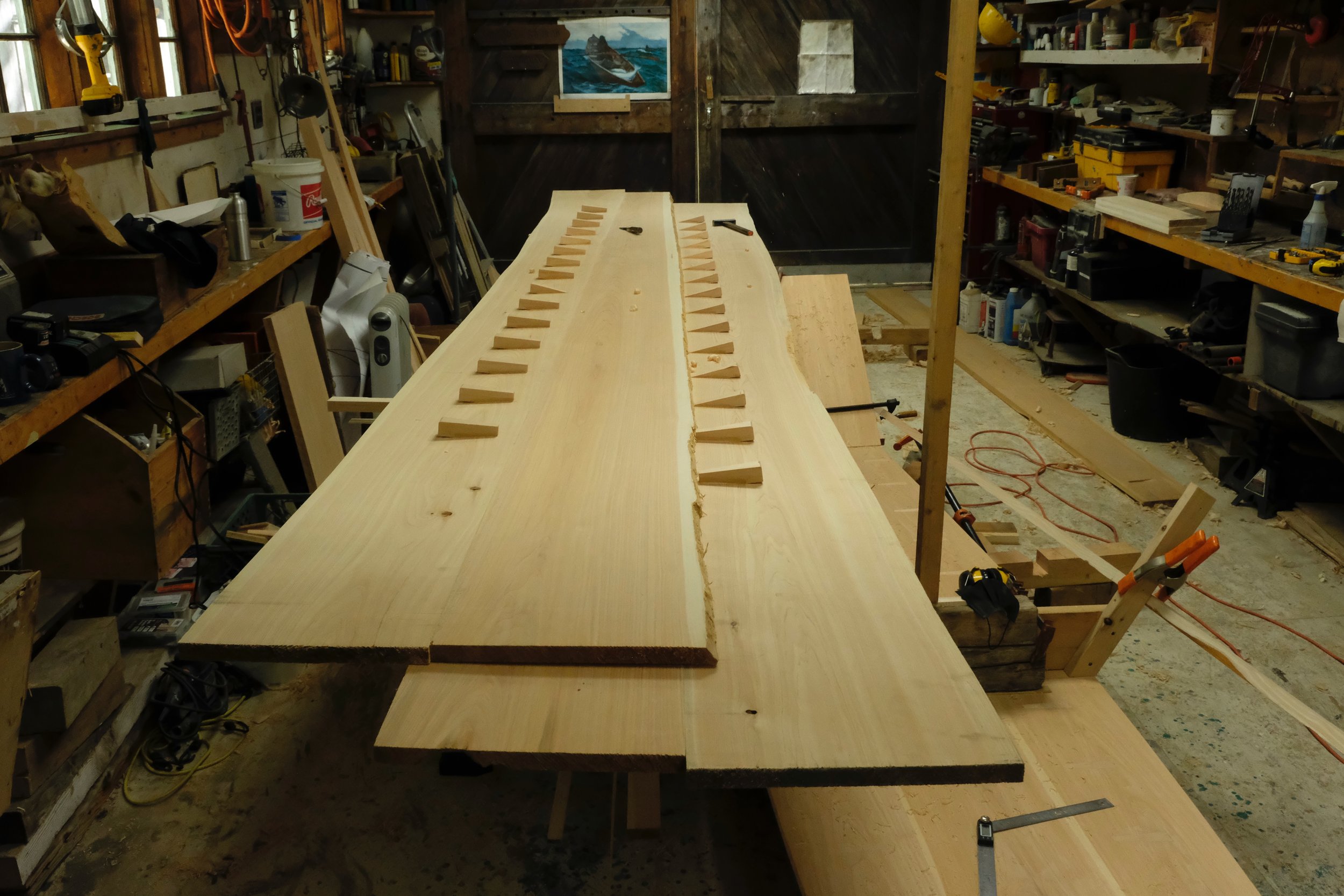
Each side plank is composed of two planks edge-fastened.
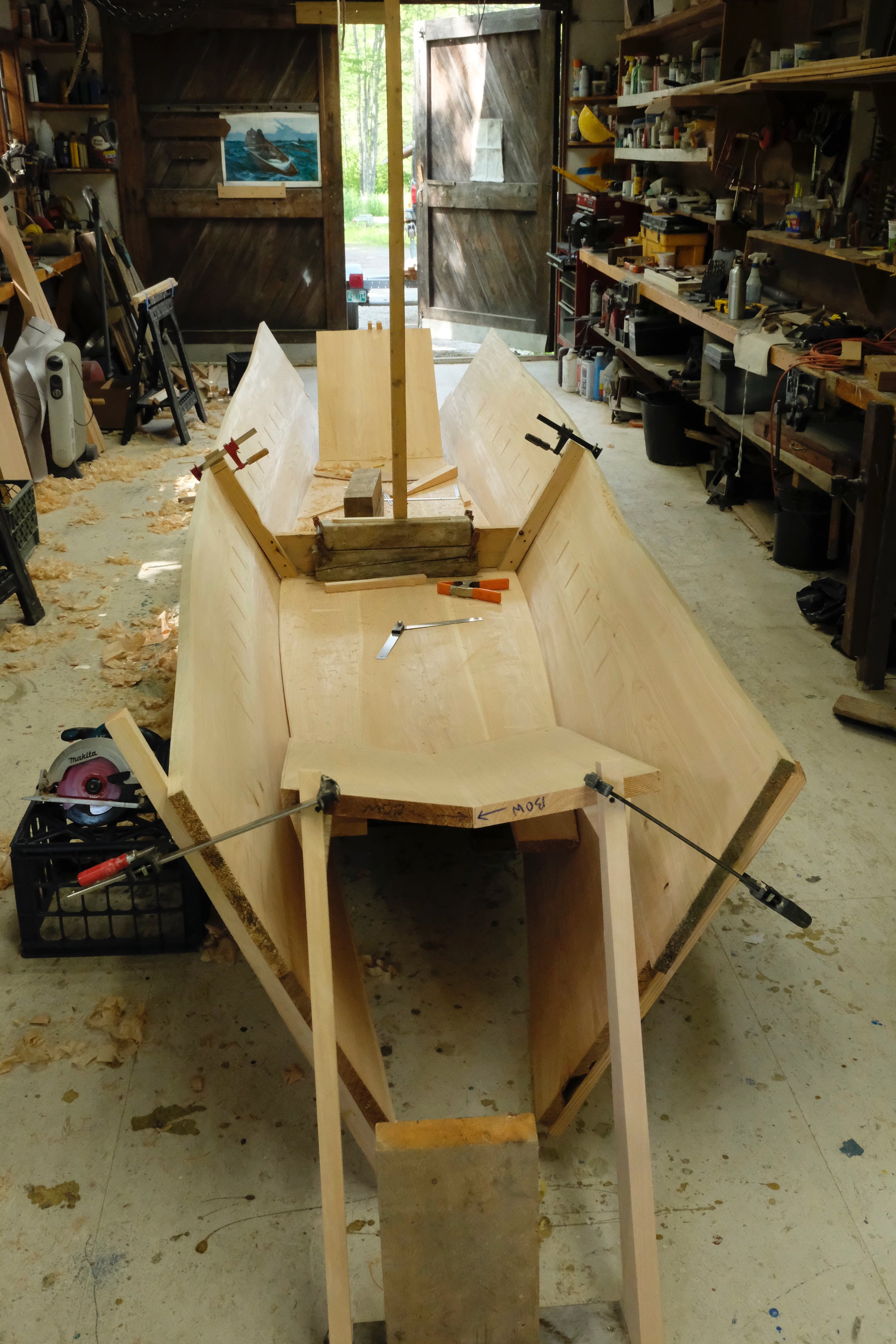
Bending the side planks to the backbone assembly.

The boat's framing consists of three beams at the sheer.
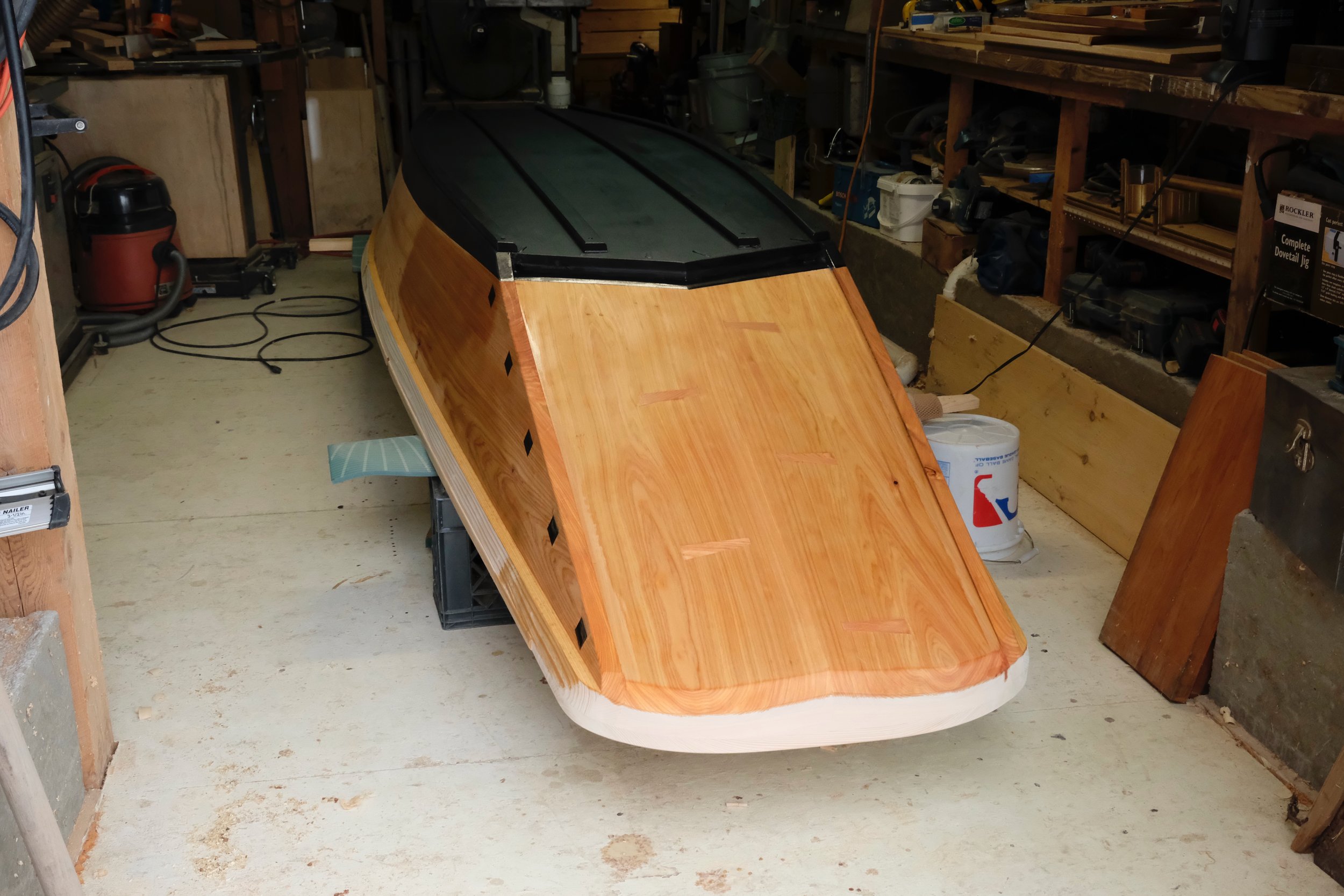
View of the boat from the bow.
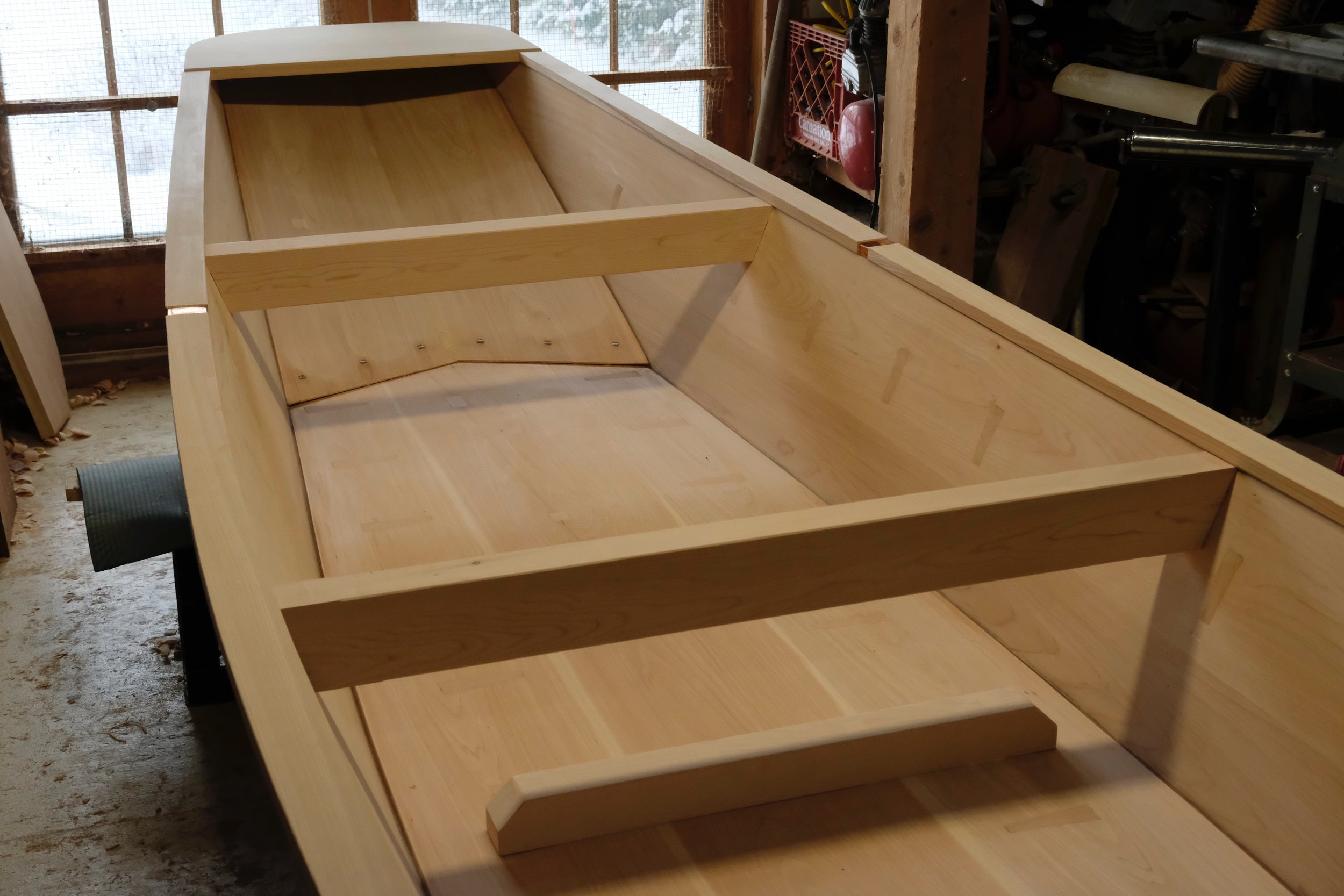
Decks and caprails are cypress for abrasion resistance.
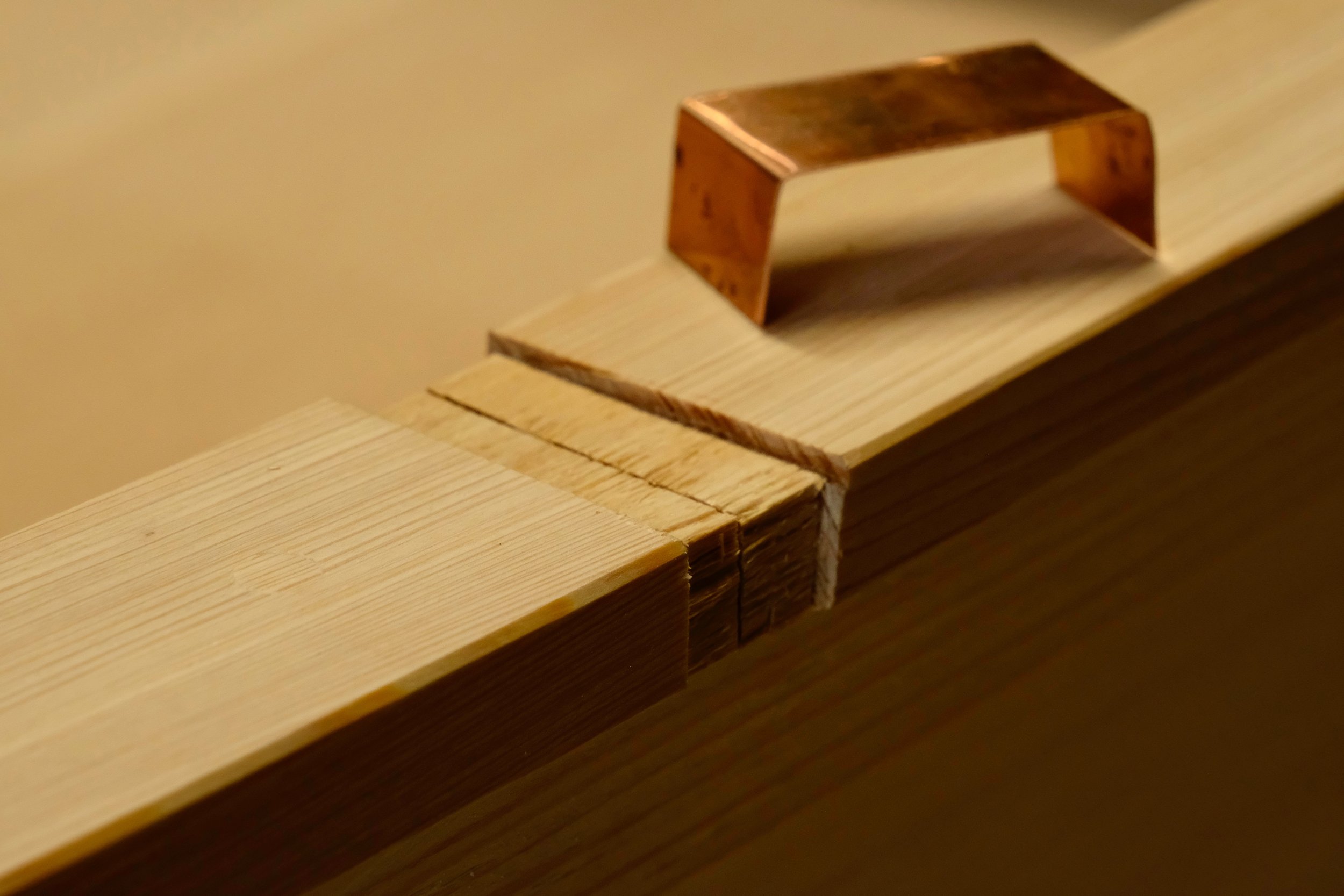
The simple joint in the caprail is covered with copper.
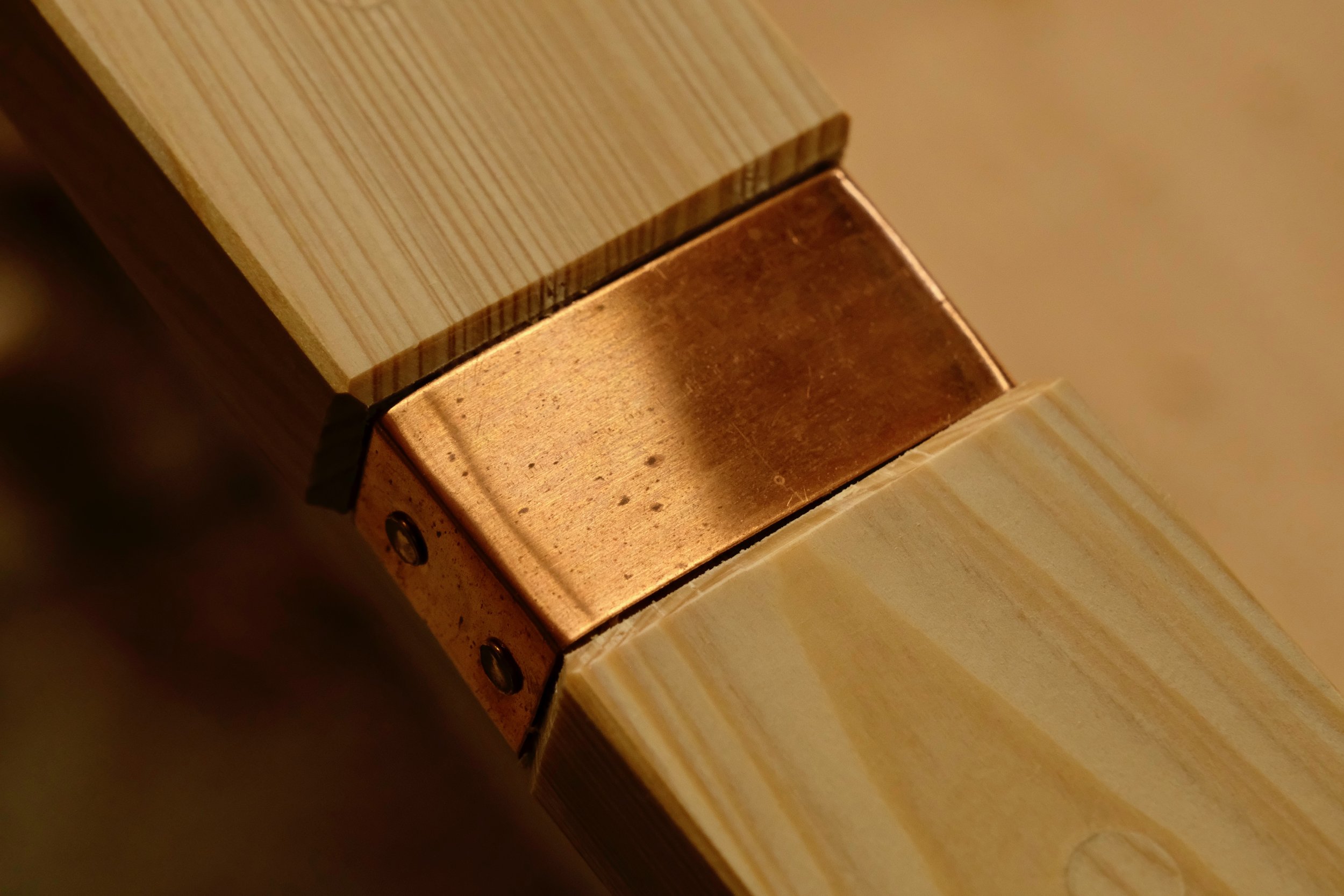
Copper is used in some Japanese boats to keep water out of joints and seams.
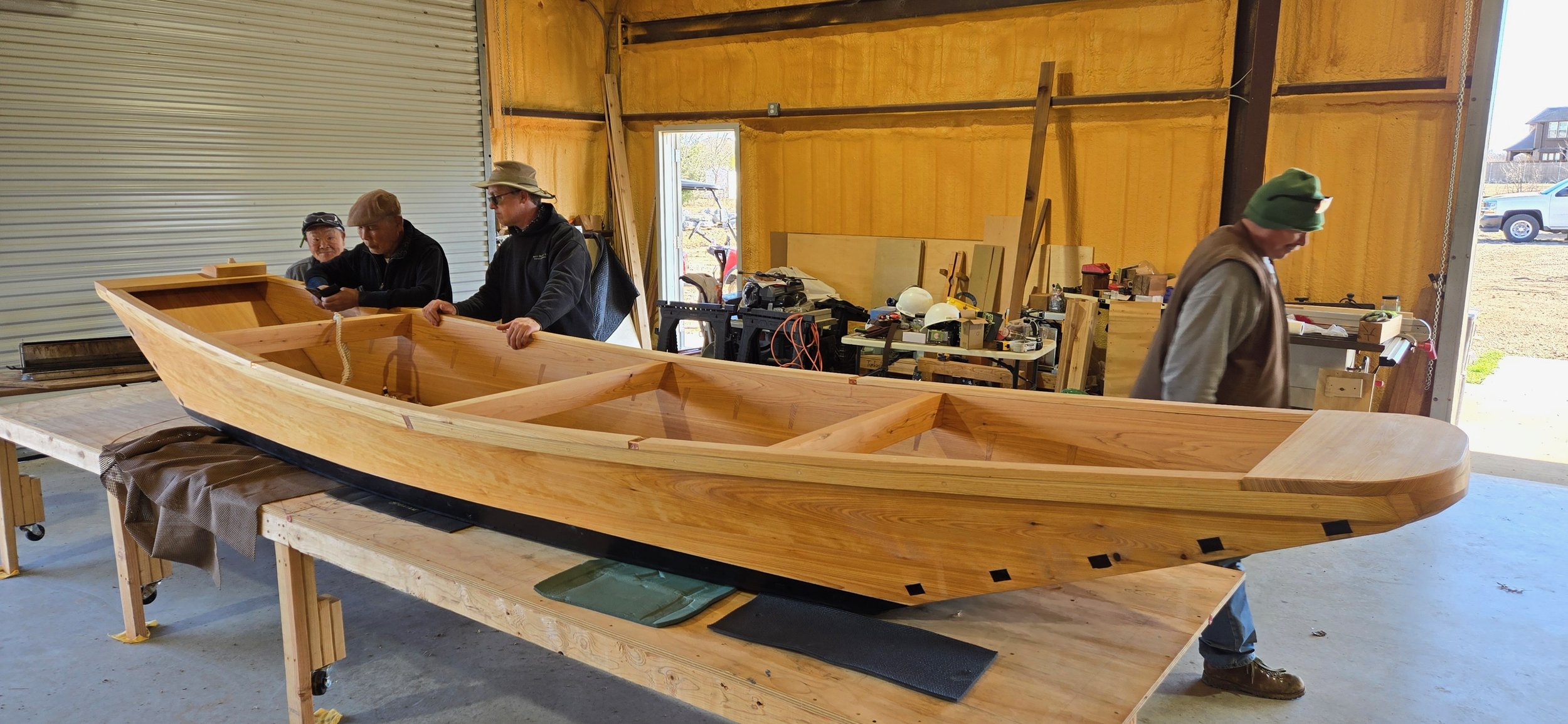
The boat after it arrived in Texas and removed from its shipping crate.
